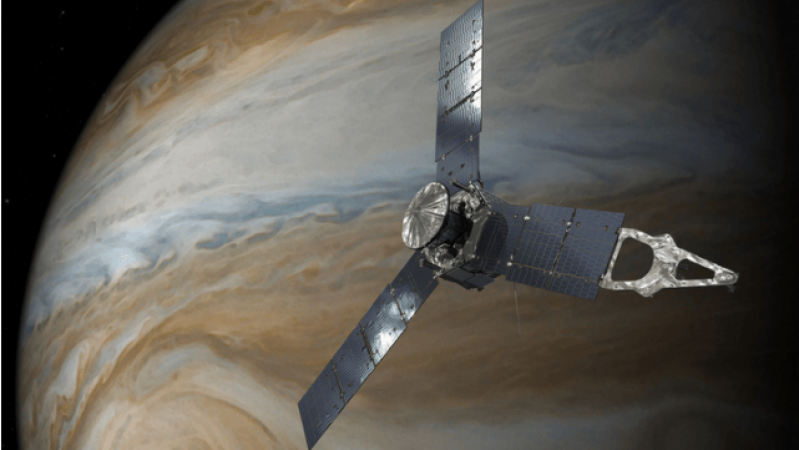
United States: On December 14, NASA's Juno spacecraft made its 47th pass of Jupiter when it ran into a problem that resulted in a brief loss of data.
Mission controllers placed the probe into safe mode on 17 December, allowing only the most critical systems to function. Fortunately, the probe has resumed normal operations as of December 29, according to the space agency's official statement.
In July 2016, the Juno spacecraft made it to Jupiter, where it is now on a long mission. NASA's Planetary Orbiter, the farthest point from Earth, is a solar-powered spacecraft the width of a basketball court.
Also Read: Israeli troops kill two Palestinians and claim their troops were attacked
During its mission, Juno provided breathtaking views of Jupiter and collected important data about the Jovian moons.
After the flyby on 14 December, Juno's downlink experienced a disruption as it was transmitting the science data it had collected to mission controllers, which ultimately caused a "memory anomaly".
According to NASA, the problem, which prevented access to the spacecraft's onboard computer, most likely developed as the space probe traveled through a region of Jupiter's magnetosphere that is highly radiation-intensive.
Also Read: One year after Russians arrive violence in Mali increases sharply
On December 17, mission controllers restarted the computer and placed the spacecraft in safe mode to resolve the problem. Fortunately, the team was able to successfully downlink most of the data collected during their previous flyby, including details about the moon Io. The discrepancy corrupted only a small portion of the data.
Juno is preparing to approach Jupiter on January 22. The mission is projected to conduct the probe until the spacecraft's capability is exhausted, or until September 2025.
Every 11 days, Juno completes one orbit around Jupiter passing over its poles. Io, the third largest moon of Jupiter and the most volcanically active region in the Solar System, is being studied by the space orbiter.
Also Read: Storm wreaks havoc in California, 19 died so far
Nine flybys will be made by the spacecraft around Io, two of which will bring it as close as 1,500 km. It has also noticed Europa and Ganymede, two additional Jovian moons.